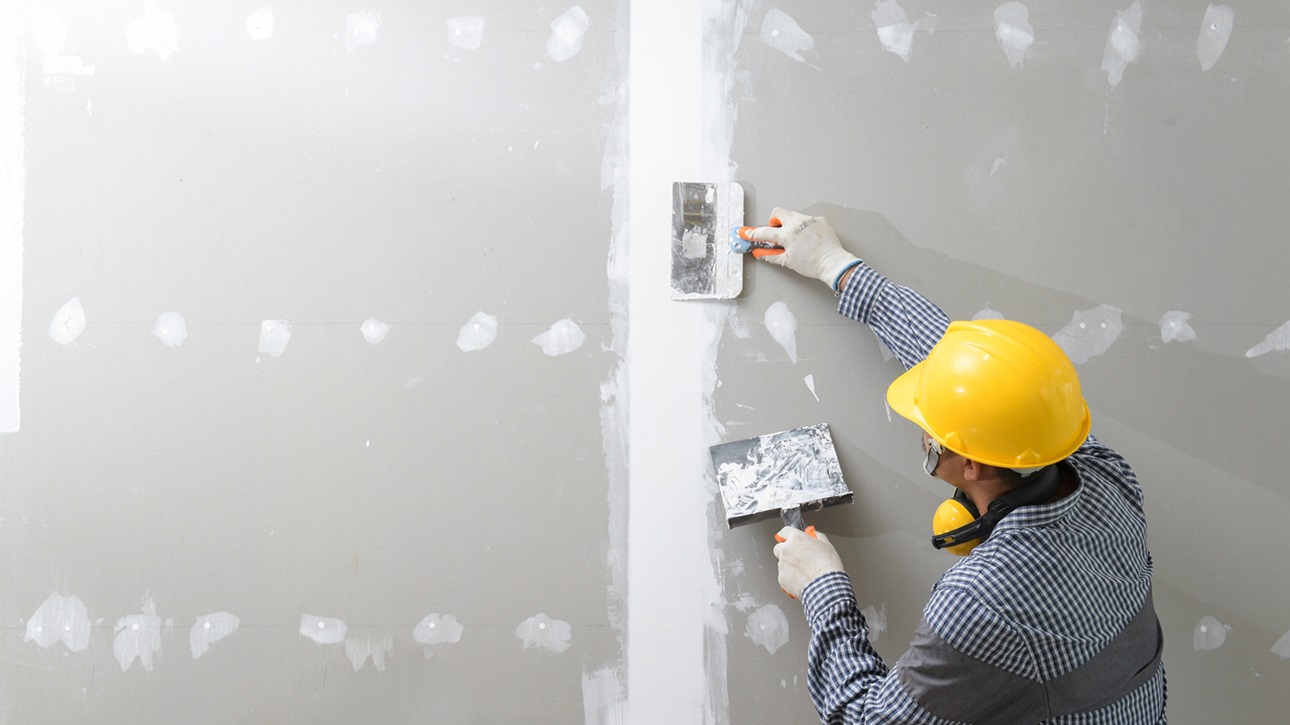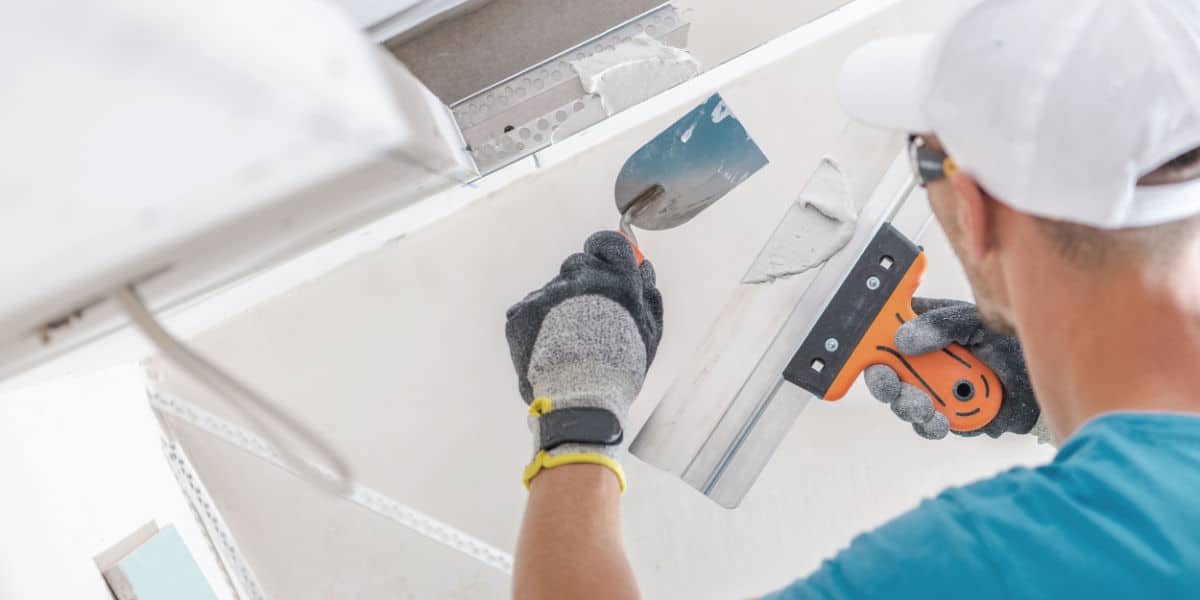Efficient Drywall Repair Techniques to Restore Your Wall surfaces
Efficient Drywall Repair Techniques to Restore Your Wall surfaces
Blog Article
Drywall Installment Made Easy: Tips for Perfect Results
Drywall installment is usually regarded as an overwhelming job, yet with the appropriate method and understanding, it can become a manageable undertaking. Choosing high quality materials and preparing the installation area are important initial steps that set the structure for success. In addition, grasping methods for cutting, hanging, and ending up drywall can dramatically affect the result. As we explore these essential pointers, you might find that also the smallest changes in your technique can lead to incredibly enhanced outcomes, leaving you to consider exactly how these practices can change your next project.
Selecting the Right Materials
Choosing the ideal materials for drywall installment is essential to attaining a durable and visually pleasing coating. drywall repair. The key component, drywall sheets, normally come in different densities, with 1/2-inch sheets being standard for interior wall surfaces. For locations calling for additional wetness resistance, such as kitchen areas or shower rooms, take into consideration using environment-friendly board or cement board, which are specifically created to hold up against humidity

Additionally, picking the appropriate bolts-- either nails or screws-- is crucial for safeguarding the drywall to the framework. Drywall screws are normally preferred for their holding power and lowered threat of standing out. Consider the finishing touches such as guide and paint, which not just improve the appearance but additionally secure the drywall from moisture and wear.
Preparing the Installment Location
Prior to beginning the drywall installment process, it is essential to prepare the installment area thoroughly. A tidy workspace lessens the risk of damage to existing things and enables for efficient activity during setup.
Following, examine the wall surfaces and ceiling for any blemishes, such as fractures, openings, or mold. Address these problems ahead of time; patch any type of problems and allow adequate time for repair work to completely dry. Additionally, make sure that electric outlets, switches, and plumbing are appropriately placed and made up, as this will impact drywall positioning.
Consider the environmental conditions also. A secure temperature level and moisture degree are essential for optimal attachment and efficiency of the drywall products. Use a dehumidifier or heating unit to produce appropriate conditions. if required.
Cutting and Hanging Drywall
The key to efficient drywall installation depends on the accurate cutting and hanging of the panels. Begin by measuring the room properly, taking into consideration any kind of obstructions such as electric outlets or home windows. Utilize a useful reference straight edge and an utility blade to rack up the drywall along your measurements, then break it along the racked up line for a tidy break. For even more elaborate cuts, such as around outlets, a drywall saw can be utilized for accuracy.

Constantly work from the top down and entrusted to right, making sure that you maintain a staggered pattern to improve security. Correctly hanging the drywall establishes the foundation for a smooth surface, inevitably leading to premium lead to your drywall task.
Insulation and Mudding Methods
While correct cutting and dangling of drywall sets the phase, the following crucial action includes mastering taping and mudding methods to make certain a get more seamless surface. Insulation is vital for strengthening joints and protecting against cracks; it includes installing tape right into the used joint compound (mud) Start with a high quality fiberglass or paper tape, using the tape over the joint and pushing it into the wet mud utilizing a taping blade, making certain no air bubbles remain.
Once the tape is in location, use a slim layer of joint substance over the tape, feathering the edges to create a smooth shift to the drywall surface. Enable this layer to completely dry entirely before sanding it lightly to remove flaws. Repeat this process, applying extra layers of mud as needed-- usually 2 to 3 layers-- while progressively widening the application area with each layer to achieve a smooth appearance.
After the last layer dries out, sand the surface area with a fine-grit sandpaper up until smooth. drywall contractor. Remember to wear a mask during sanding to avoid inhaling dirt fragments. Understanding these taping and mudding strategies is essential for attaining a professional-quality coating in your drywall installment
Completing Touches for Excellence
Attaining a remarkable drywall installment goes past mudding and taping; it culminates in the finishing touches that boost the total look. These last steps are important in guaranteeing a professional-grade finish that boosts the appearances of your room.
Begin by fining sand the dried out joint compound to create a smooth surface area. Utilize a fine-grit sandpaper and a sanding block or post sander for ideal control. Pay particular focus to edges and edges, as these locations often tend to need even more careful work. After fining sand, wipe down the wall surfaces with a moist cloth to get rid of any type of dirt bits, ensuring a tidy surface for paint.
Following, apply a guide specifically made for drywall. This action is vital, as it helps seal the joint substance and offers a consistent base for the topcoat. When the guide dries, check for any flaws, and repair as needed.
Verdict
In verdict, effective drywall installment pivots on the careful selection of materials, extensive preparation of the installment location, and precise execution of cutting and hanging techniques. Mastery of taping and mudding processes is necessary for achieving a smooth finish.
Drywall installation is frequently viewed as a complicated job, yet with the appropriate approach and knowledge, it can become a convenient undertaking.Picking the appropriate materials for drywall setup is vital try this to accomplishing a durable and visually pleasing finish.Before starting the drywall installment procedure, it is vital to prepare the installation location extensively. Grasping these taping and mudding methods is vital for achieving a professional-quality finish in your drywall installment.
In final thought, successful drywall setup hinges on the mindful option of materials, comprehensive preparation of the installment area, and precise implementation of reducing and hanging methods.
Report this page